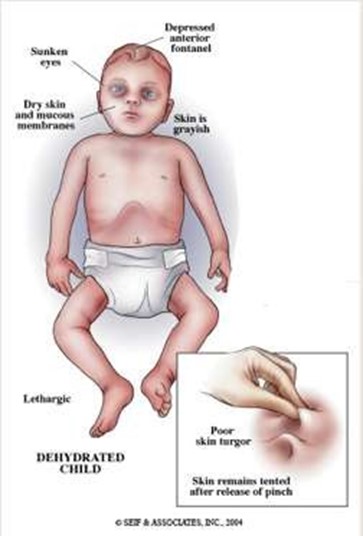A nurse in an emergency department is caring for a client following a motor-vehicle crash. The client’s Glasgow coma scale rating is 15.
Which of the following findings should the nurse expect?
The client withdraws from pain.
The client is unable to obey commands.
The client opens eyes to sound.
The client is oriented times three.
The Correct Answer is D
This means that the client knows who they are, where they are, and what time it is. This indicates a high level of consciousness and a normal Glasgow coma scale (GCS) rating of 15.
Choice A is wrong because the client withdraws from pain.
This means that the client reacts to a painful stimulus by pulling away from it. This indicates a lower level of consciousness and a GCS rating of 4 for motor response.
Choice B is wrong because the client is unable to obey commands.
This means that the client does not follow simple instructions such as moving a limb or opening their eyes. This indicates a lower level of consciousness and a GCS rating of 1 or 2 for motor response.
Choice C is wrong because the client opens eyes to sound.
This means that the client does not open their eyes spontaneously, but only when they hear a loud noise. This indicates a lower level of consciousness and a GCS rating of 3 for eye opening.
The Glasgow coma scale is a clinical tool used to assess the level of consciousness of a person after a brain injury.
It consists of three tests: eye opening, verbal response, and motor response.
Each test has a score range from 1 to 6, with higher scores indicating higher levels of consciousness. The total score ranges from 3 to 15, with lower scores indicating higher risk of death.
Nursing Test Bank
Naxlex Comprehensive Predictor Exams
Related Questions
Correct Answer is A
Explanation

These are signs of severe dehydration in an infant, which can be life-threatening and should be reported to the provider immediately. The infant may need intravenous fluids and electrolytes to restore hydration and prevent complications.
Choice B is wrong because a temperature of 38° C (100.4° F) and a pulse rate of 124/min are not abnormal for an infant and do not indicate severe dehydration. These are common findings in an infant who has gastroenteritis, which is an inflammation of the stomach and intestines caused by a virus, bacteria, or parasite.
Choice C is wrong because decreased appetite and irritability are also common findings in an infant who has gastroenteritis, but they do not indicate severe dehydration. The nurse should encourage oral rehydration with fluids such as breast milk, formula, or oral electrolyte solution.
Choice D is wrong because pale skin and a 24-hr fluid deficit of 30 mL are not signs of severe dehydration in an infant.
A fluid deficit of 30 mL is less than 1 oz and is not significant for an infant who weighs about 10 kg (22 lbs). A fluid deficit of more than 10% of body weight would indicate severe dehydration.
Normal ranges for vital signs in infants are as follows:
• Temperature: 36.5° C to 37.5° C (97.7° F to 99.5° F)
• Pulse rate: 100 to 160/min
• Respiratory rate: 30 to 60/min
• Blood pressure: 65/41 to 100/50 mm Hg
Normal ranges for fluid intake and output in infants are as follows:
• Fluid intake: 100 to 150 mL/kg/day
• Fluid output: 1 to 2 mL/kg/hr
Correct Answer is D
Explanation
Placenta previa is a condition where the placenta implants in the lower part of the uterus, partly or completely covering the cervical opening.

This can cause painless, bright red vaginal bleeding, usually in the third trimester. Spotting is a sign of placenta previa and should be reported to the provider immediately. Choice A is wrong because nausea is not a specific finding of placenta previa.
Nausea can occur in normal pregnancy or in other conditions such as hyperemesis gravidarum or preeclampsia.
Choice B is wrong because polyhydramnios is not a finding of placenta previa.
Polyhydramnios is a condition where there is too much amniotic fluid in the uterus, which can cause complications such as preterm labor, cord prolapse, or fetal malformations.
Choice C is wrong because uterine tenderness is not a finding of placenta previa.
Uterine tenderness is a sign of abruptio placentae, which is a condition where the placenta separates from the uterine wall before delivery.
This can cause severe abdominal pain, dark red vaginal bleeding, and fetal distress.
Whether you are a student looking to ace your exams or a practicing nurse seeking to enhance your expertise , our nursing education contents will empower you with the confidence and competence to make a difference in the lives of patients and become a respected leader in the healthcare field.
Visit Naxlex, invest in your future and unlock endless possibilities with our unparalleled nursing education contents today
Report Wrong Answer on the Current Question
Do you disagree with the answer? If yes, what is your expected answer? Explain.
Kindly be descriptive with the issue you are facing.
